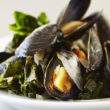The adolescent years are one of the most vulnerable years in a person’s life. Though technically, only the years from 13 to 19 are considered as adolescent years, the critical physical, emotional and especially the psychological changes occurs even before they reach their 13th year. The foundation for their holistic characteristics is starting to be laid out at this time. So as they move further through their adolescence, these changes become apparent and continue to develop until their young adult years. Teenagers are very susceptible to social, environmental and academic influences at this stage. Alarmingly, many teenagers are now facing psychiatric conditions that may have resulted to one or several factors affecting them at this stage. And more often than not, parents are blindsided. But to help parents identify such conditions, here are the most common psychiatric conditions affecting teens:
Depression
Sadly, around 20% of teenagers develop depression before they even reach adulthood. The gravity teen depression makes it the top risk factor of the occurrence of suicide among teens. Depression is a mood disorder that is manifested by extreme sadness and/or loss of interest persisting or lasting for a minimum of two weeks.
Red Flags:
-Uncontrollable feelings of sadness, emptiness, worthlessness, guilt and/or hopelessness.
-Loss of interest for activities that have once given them pleasure and enjoyment.
-Changes in appetite.
-Lack of energy for menial tasks.
-Agitated or Irritable mood.
-Frequent thoughts of self-harm, suicide and of death
Eating Disorders
There are several known eating disorders but most people have heard or knows someone with anorexia (anorexia nervosa) or bulimia (bulimia nervosa). People with these types of disorders have an abnormal relationship with food or the lack thereof. It is an unnatural obsession with food, body image, weight and shape.
Red Flags:
-Fear of gaining weight
-Feelings of guilt during or after eating.
-Avoidance of food or eating in secret
-Distorted view of body image or nitpicking on tiny flaws of their own body
-Frequent dieting/exercising or use of diet pills, shakes and other methods
-Avoidance of activities that are previously enjoyed
Alcohol/Substance Dependence or Abuse
Alcohol as with substances (cocaine, heroin, meth etc.) is very addictive. The use of such can lead to dependence from them and though recovery is possible, it is a difficult road to travel. Many parents assume that alcohol and/or substance use is brought on by influences from peers. Though that may be the case for some, most cases reported are explained by users as a way to ‘escape’. Their constant struggle in facing conflicts, troublesome circumstances, emotional battles are often too much to handle and they need a way to for at least a moment escape their realities.
Red Flags:
-Signs of depression can signal alcohol or substance use
-Start lying on drinking, how often you drink and why your drink
-Denial of the actual number of drinks consumed
-Sudden changes in academic performances, eating habits, mood and behavior
-Acts of stealing to sustain their vice/ addiction












